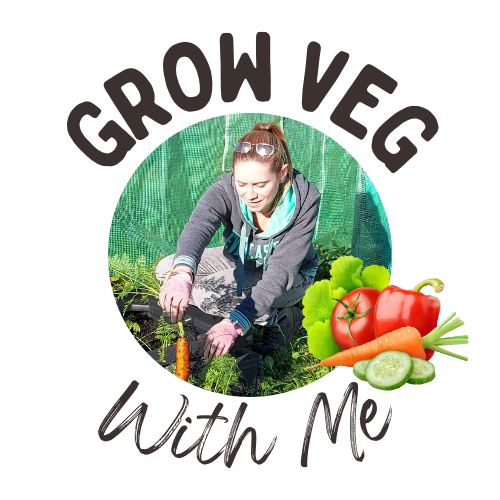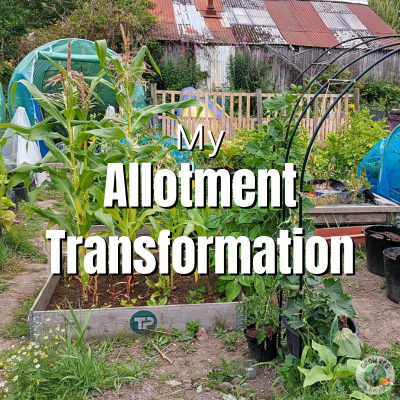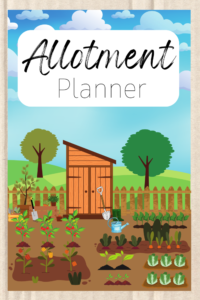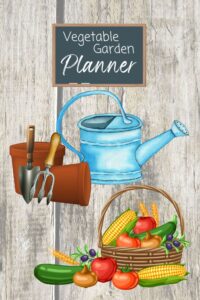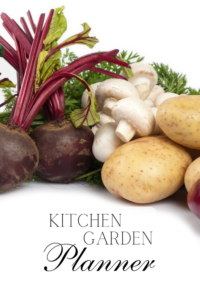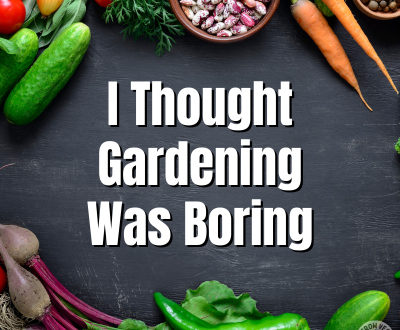If you’ve seen my earlier post, How I Grew Veg as a Newbie then you’ll know that for a couple of years I’d been growing veg in containers in my tiny back yard.
I dreamed of having my own allotment plot so that I could grow more; my space was so limited at home.
Unfortunately, in my area, allotment plots were sought after and had at least 5-10 year waiting lists. Even if I’d put my name down for one, they were so far away that I wouldn’t have been able to spend any significant time there. I would have spent more time travelling than growing.
Sadly, I’d pretty much given up on the idea of ever having my own plot.
Then, by coincidence one day, I heard about a small community who had been allocated some abandoned land by the Council.
They had been clearing it and splitting it up into allotment plots for themselves, but still needed help to make it into a workable space with allotments and some communal areas.
Incredibly I was offered a plot to rent on the understanding that it wasn’t an official allotment site, just a small community of growers working together.
There wouldn’t be running water available and we would all need to share responsibility for the site including general maintenance of our plots and communal areas.
I think you can probably tell I jumped at the chance!
Not only did I have a plot, but I was accepted into their community and made some wonderful friends along the way.
My Allotment Transformation:
I was warned that it wouldn’t be easy to prepare my plot because of the land’s history.
It had been used as a waste site for builders around ten years earlier, so the ground was covered in glass, bricks, stone, metal and plastic.
Rubbish wasn’t only on the surface, it was buried in the ground too. It was going to be a challenge!
I didn’t let this worry me – I was too excited to see any negatives at that point.
October 2020
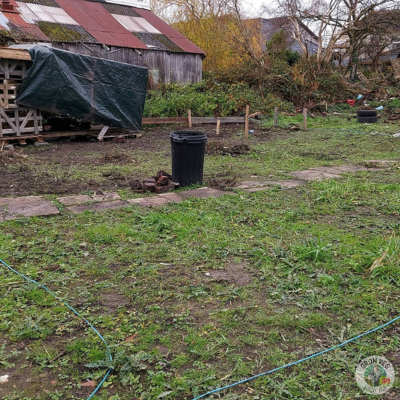
My first trip to see my plot was a surprise to say the least. All I could see were weeds, flagstones and mud!
There were brambles that needed clearing and the surface of the ground was littered with glass. I knew I had a big job ahead of me.
The first few trips were spent painstakingly removing the shards, which seemed to take forever
My Husband and the kids helped (all of us wearing gloves!)
Slowly, we managed to remove the overgrowth and think about how we were going to handle the weeds.
Next came the bricks – there were so many of them that it seemed like a never ending task to get them all out.
There were also flagstones that needed to be removed and they were heavy!
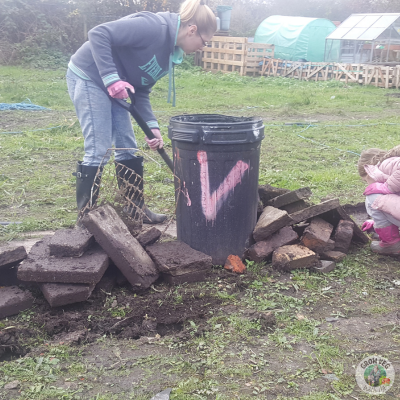
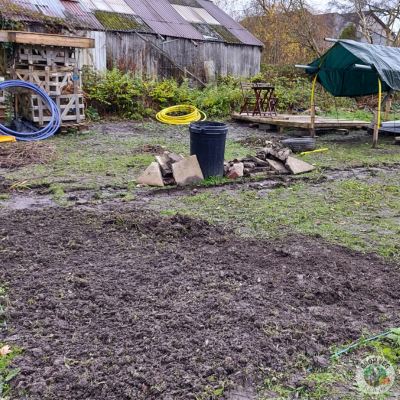
Every time I pulled something out, there was more rubbish underneath.
I was beginning to think the whole plot was metres deep with debris.
When we realised that the glass wasn’t just on the surface, it was under the ground too, I started to remove the top layers of soil.
It was frustrating, because I’d had the plot a couple of months and it still looked just as bad as it had on the first day!
4. December 2020
Denis built a base where my shed was going to be and he had sourced some carpet for me.
When I’d removed the first few inches from the surface of a section, I covered it with the carpet to stop weeds coming through.
I kept it in place with some of the bricks (they came in useful for something!)
You wouldn’t believe the things I found under the ground – tools, wire, window frames, even an old barrel!
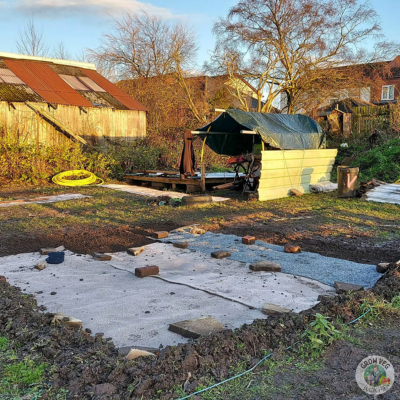
I had a little shelter from the rain, which definitely helped, but in mid December it was getting too cold to continue. The ground was either frozen or full of mud, and we were unable to dig. We decided to take break over Christmas and the new year.
February 2021
Wet, muddy weather in January stopped us getting much work done, so we collected pallets and other scavenged items we could recycle and use for growing.
The plot still looked a mess because of everything waiting to be used – sometimes it felt as though we were getting nowhere.
Eventually, the weather was becoming drier and I was able to dig again, uncovering more buried junk as I went.
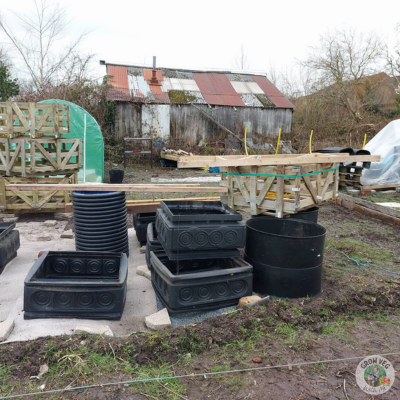
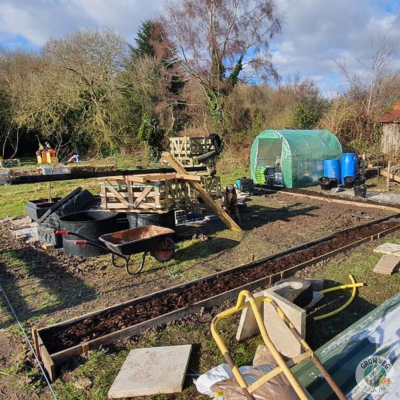
One thing I was very excited about was my polytunnel.
We made sure it was dug in deeply to protect it from the wind.
Then my Husband built a pathway out of wood to keep it separate from the growing areas.
We sourced a couple of barrels to collect rain water in. It would run into guttering that would be attached to the polytunnel.
5. March 2021
Surprise, surprise I found more bricks!
In between digging them out, I concentrated on sowing seeds in my polytunnel.
There were lots of vegetables I planned to grow and they needed to be started or the plot would be ready but I would have no plants to put in it!
It was a lot warmer in there than it was outside!
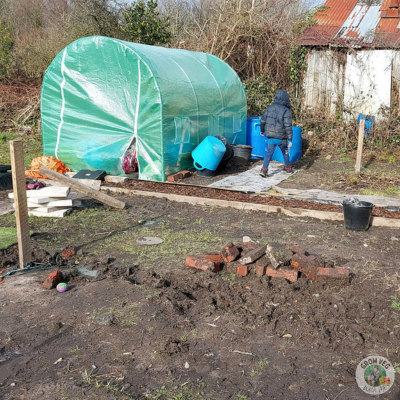
I already had seedlings growing at home, waiting for the weather to warm up before I brought them to the allotment.
I placed the black plastic beds on one edge of the plot and began working on digging the surface in front of the polytunnel.
The area had been covered up with pallets so I hadn’t been able to get to it until then.


After levelling the ground, I was able to open up my pallet collar beds and arrange them where I wanted them.
This was where I wanted three beds to go for my salad bed and two potato beds.
Unfortunately for me, there was still a lot of digging to do, and I was gathering a lot of soil that was in a pile at the top end of the plot.
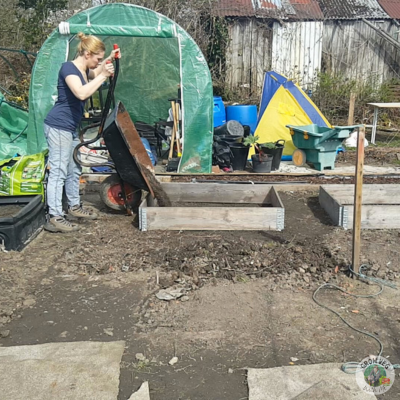
Because the soil had glass and other debris in it, I couldn’t use it in my beds as it was. But I didn’t want to waste it either.
I sifted it into my wheelbarrow, one shovel full at a time (another huge task!) and gradually added it to the bottom of each bed.
It was hard work but I wanted to save as much money as possible and recycle everything I could. I saw no point in buying topsoil, I already had some.
I was happy that I was finally seeing my efforts pay off – the plot was finally starting to look like an allotment!
6. April 2021
April was the month that everything started coming together at last.
The first thing ever planted at my allotment plot were carrots and parsnips, closely followed by potatoes.
I’d really turned this abandoned piece of land into a growing space and I was so pleased with myself.
There was still a lot to do though, so I continued digging, levelling and sieving until I had more growing beds in place.
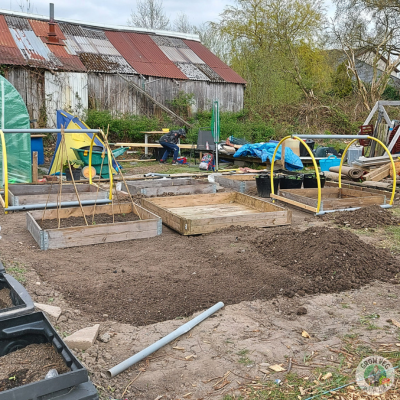
My Husband very kindly made me some netting covers to keep the pests off my beds. I love the bright blue and yellow colours.
They looked huge to me at first, but my broccoli plants reached the top when they were fully grown.
After a bit more digging and I had my last two beds in their final places. It was so tiring, but I could see the finish line and I knew I was almost there.
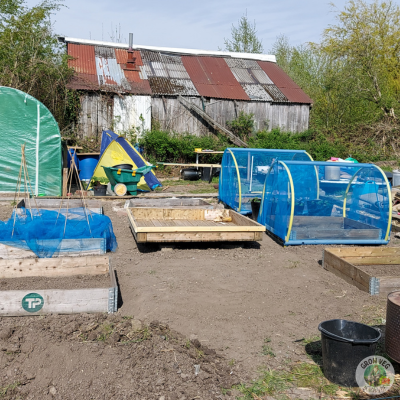
May 2021
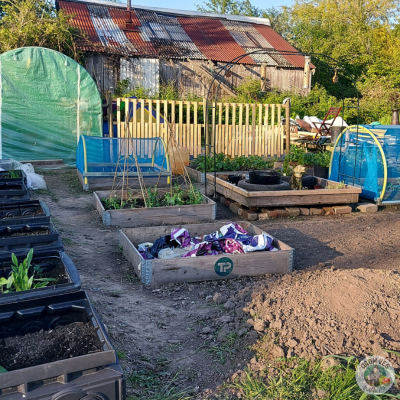
By May, peas had been planted out and the potato plants were growing well.
My Salad bed had been sown and the seedlings were starting to come through.
Tomatoes were in the polytunnel and I had planted out broccoli and cauliflower.
The square beds had herbs, turnips, flowers and comfrey in them.
I even had a fence with a private little sitting area where I could eat my lunch and look at what I’d achieved.
June 2021
In early June I added some archways so that I could grow beans and cucumbers up them.
I loved the way they stood in the middle of the plot and couldn’t wait for them to be covered in plants.
Everything I had planted was growing and thriving, turning the allotment from a brown patch of dirt to a vibrant green.
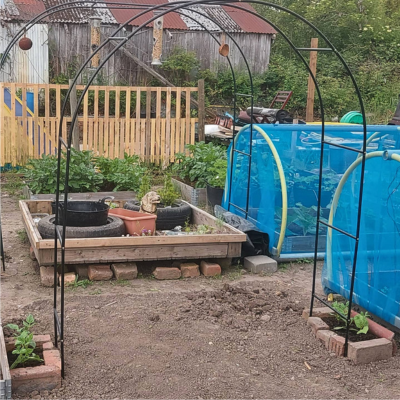
By the middle of the month, I’d started taking my first harvests – the feeling was incredible.
By late June, Sweetcorn was planted out and I’d had harvests of peas, potatoes and spring onions.
I couldn’t believe I was growing so much food, it would have been impossible in my back yard.
The joy I felt when I spent time at my allotment was worth all the hard graft I’d put into it in the beginning.
I could take time to sit and watch the birds and the insects who were also enjoying my plot.
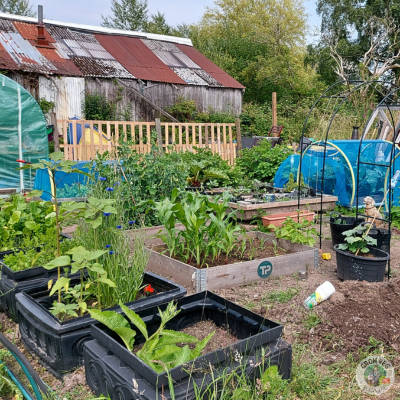
July 2021
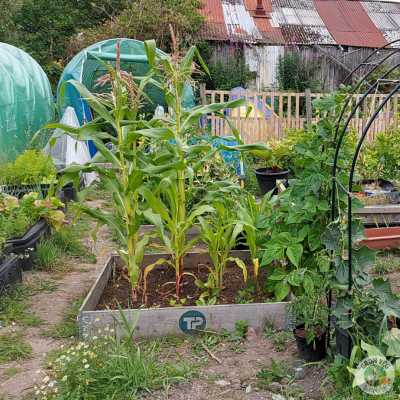
I don’t think any allotment plot is ever ‘finished.’
There will always be tweaks you want to make and changes to the positions of things, but for the first season I didn’t think it looked to bad.
My allotment plot had gone from a piece of abandoned land to a productive vegetable garden.
I was proud of myself for working so hard in the beginning. I was told that I wouldn’t be ready to grow much in the first year but I proved that I could.
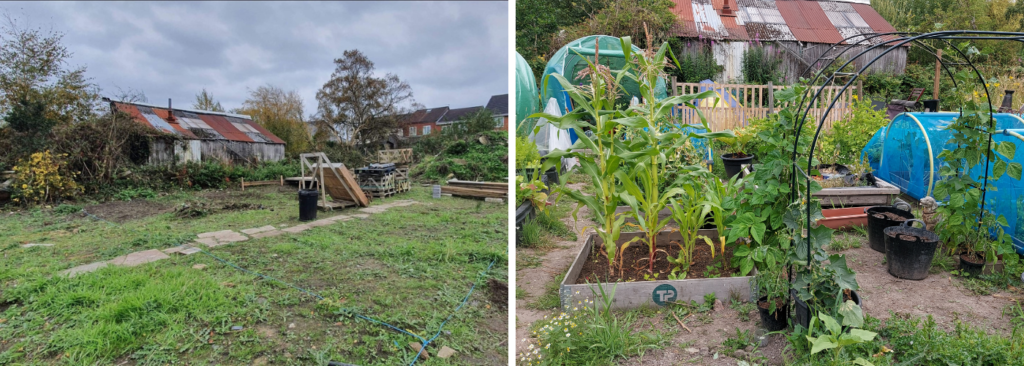
I wanted to share my allotment transformation to provide inspiration.
I had no special gardening skills or know how; I just learned as I went. Sometimes things worked and sometimes they didn’t.
I thought about giving up many times because it felt like I was putting so much effort into a plot that was beyond saving.
I kept on imagining how I would feel when I was harvesting all of my vegetables and that it wouldn’t happen if I didn’t push through and get it done.
My plot became my happy place when I was working on it, but when the beds were in and they were full of plants, it became much more than that and brought so much joy to my life. I would recommend it to anyone!
I hope you found this post helpful – if you did please leave me a comment below and visit my instagram page and Youtube channel where you can see more of what I’ve been up to.
